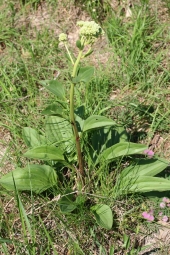Hi there Rodd, thanks for your advice - I do have neighbors with goats and cattle, so I'll definitely look into the possibility of leasing out for the minimum head of livestock to qualify! I think I found your tractor guys on Craigslist, and they have an incredible selection of makes and models - I'm going to keep my eye on their postings and see if that perfect deal pops up.
I was hoping to edit the original post and update my diagram with a better one I worked one, but I'll just have to do it here - looks like posts over a certain age can't be edited.
I did a bit of research looking for LIDAR images of my area after reading about how to improve your contour maps over at another thread (
Contour Maps For Cheap) and was disappointed to find that none existed. But, I persevered, and found a dataset from TNRIS (
Texas Natural Resources Information System) that had 5ft contour data in downloadable .shp shapefiles for use with GIS mapping tools. I downloaded the free ArcGIS Explorer tool from ESRI (
ArcGIS Explorer Desktop) and imported the .shp file. Once I figured out how the tool worked, I was able to play around and map out my land pretty well!
I've attached the current status map, and it shows the issues I'm dealing with on the northern half of the property. We have a campsite near the pond on flat, drain-free land, but three main runoffs drain directly over the only access road, right at the eastern end of the pond. That section of road is an impassable clay mud pit, and I need to bridge it so that we don't have to lug everything to camp by hand. I'm still researching that, and will either do a proper culvert with fill material, or build a low bridge about a foot over the water level, spanning the 8ft section.
The rest of my priority work is to clear the drainage ditches and place brush in eroded gullies to act as baffles for heavy flows - I'm losing a lot of soil in those waterways. Later I'll look at installing swales and harvesting the water efficiently.














